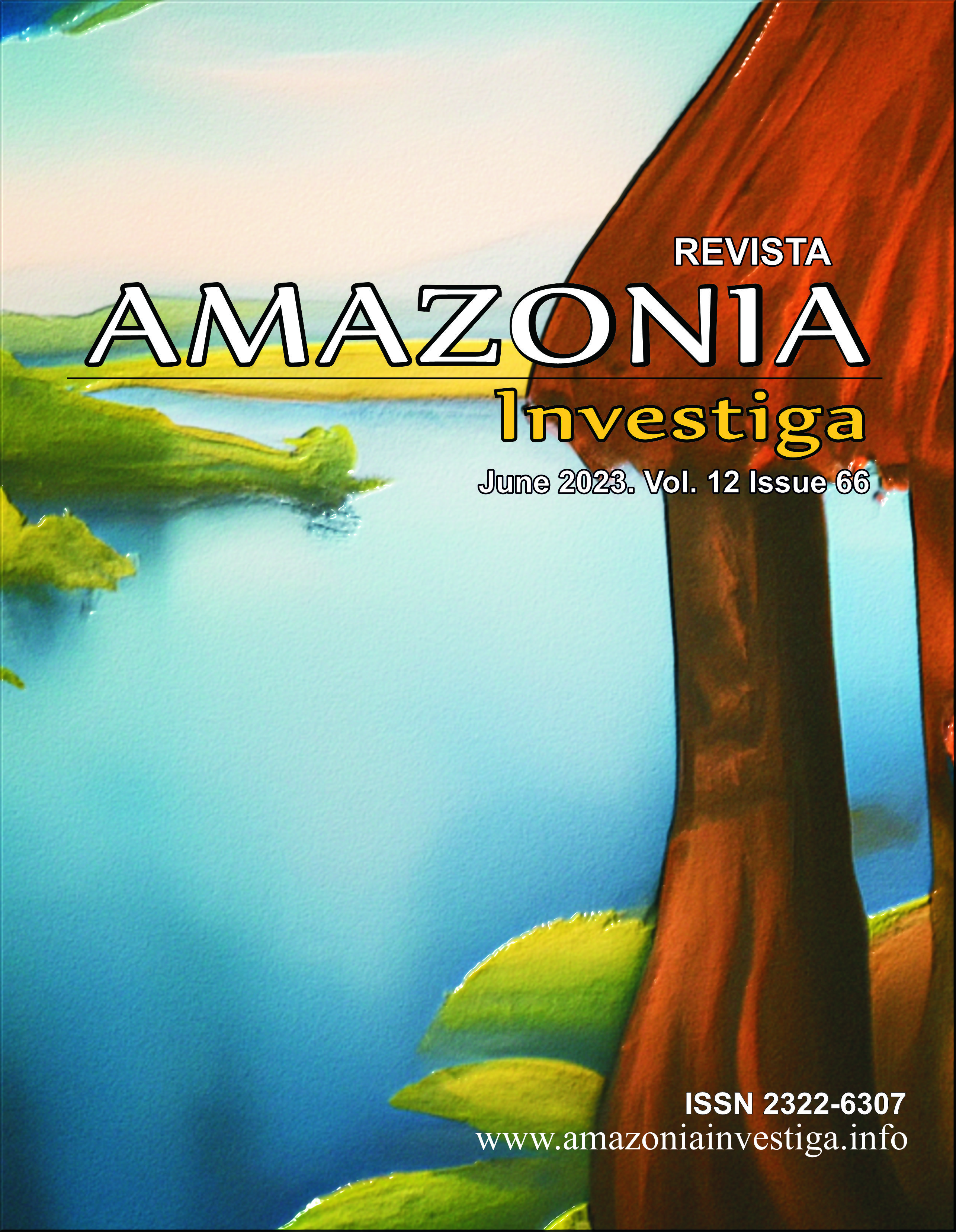Publicado 2023-07-30
Palabras clave
- Medical care continuity, healthcare management, legal system in the medical sphere, healthcare efficacy under martial law.
Cómo citar
Resumen
The most significant value of society is the life and health of the people. Therefore, the main goal of the healthcare system is to ensure the continuity of medical services for the population. Organizing the healthcare sector within the community during the war presents an unprecedented challenge for government authorities and local self-governance.
The article aims to define the peculiarities of organizing healthcare institutions under martial law in the country, highlighting key factors that influence the field of medicine and directions for optimizing the activities of medical establishments. The research employed various philosophical methods for analysis and information study, including dialectical, metaphysical, synergistic, and intuitive methods. Besides, the authors used systemic analysis, synthesis, and abstraction. At the same time, such particular scientific methods as formal-logical (dogmatic), comparative, sociological, hermeneutical, instrumental, axiological, and a synthesis of institutional and axiological approaches were used. The research results identified crucial theoretical aspects regarding the operation of healthcare institutions during the war. The article also examines scholars' viewpoints on the key problems of medical institutions during hostilities.
Descargas
Citas
Aqeel, M., Ali, F., Iqbal, M.W., Rana, T.A., Arif, M., & Auwul, Md.R. (2022). A Review of Security and Privacy Concerns in the Internet of Things (IoT) Hindawi Journal of Sensors, 5724168, 20. https://doi.org/10.1155/2022/5724168
Badotra, S., & Sundas, A. (2020). A systematic review on security of E-commerce systems. International Journal of Applied Science and Engineering, 18, 1-19. https://gigvvy.com/journals/ijase/articles/ijase-202106-18-2-010.pdf
Beckley, M. (2018). The power of nations: Measuring what matters. International Security, 43(2), 7–44. https://doi.org/10.1162/isec_a_00328
Borger, J. (2022). UN international court of justice orders Russia to halt invasion of Ukraine. The Guardian. https://acortar.link/WTXip4
Bratko, A. (2022). The concept of planning operational and service activities of the State Border Guard Service of Ukraine. Journal of Scientific Papers Social Development and Security, 12, 6, 1-10. https://paperssds.eu/index.php/JSPSDS/article/view/475
Catanzaro, D., Pesenti, R., & Ronco, R. (2023). Job scheduling under Time-of-Use energy tariffs for sustainable manufacturing: a survey. European Journal of Operational Research, 308(3), 1091-1109. https://doi.org/10.1016/j.ejor.2023.01.029
Cornwall, W. (2022). It looks like iron curtain 2: Arctic research with Russia curtailed after Ukraine invasion. Science, 2. https://doi.org/10.1126/science.adb1835
Darden, J.T. (2023). Ukrainian wartime policy and the construction of women's combatant status. Women's Studies International Forum, 96, January–February 2023, 102665. https://doi.org/10.1016/j.wsif.2022.102665
Driedger, J. J. (2023). Risk acceptance and offensive war: The case of Russia under the Putin regime. Contemporary Security Policy, 44(2), 199-225.
Gallo-Cajiao, E., Dolšak, N., Prakash, A., Mundkur, T., Harris, P. G., Mitchell, R. B., ... & Biggs, D. (2023). Implications of Russia’s invasion of Ukraine for the governance of biodiversity conservation. Frontiers in Conservation Science, 4. https://doi.org/10.3389/fcosc.2023.989019
International Organization for Migration (2023). 7.1 million people displaced by the war in Ukraine: IOM survey. https://www.iom.int/news/71-million-people-displaced-war-ukraine-iom-survey
Kottasova, I., & Sarbu, A. (2022). Millions of women and children have fled the war in Ukraine. Traffickers are waiting to prey on them. CNN. https://acortar.link/Q7nJMR
Kuzio, T. (2022). Imperial nationalism as the driver behind russia's invasion of Ukraine. Nations Nationalism. https://doi.org/10.1111/nana.12875
Lkhaajav, B. (2022). How the Russia-Ukraine War Is Changing Northeast Asia’s Geopolitics. The Diplomat. https://acortar.link/oLt9qR
Lukin, A. (2019). Russian–Chinese Cooperation in Central Asia and the Idea of Greater Eurasia. India Quarterly, 75(1), 1–14. https://doi.org/10.1177/0974928418821477
Mishra, A., Alzoubi, Y.I., Anwar, M.J., & Gill, A.Q. (2022). Attributes impacting cybersecurity policy development: Anevidence from seven nations. Computers & Security, 120. https://doi.org/10.1016/j.cose.2022.102820
Morales, M.B., Díaz, M., Giralt, D., Sardà-Palomera, F., Traba, J., & Mougeot, F., ... & Bota, G. (2022). Protect European green agricultural policies for future food security. Communications Earth & Environment, 3, 217. https://doi.org/10.1038/s43247-022-00550-2
O’Grady, S., & Khudov, K. (2022). Ukrainian women stand strong against Russian invaders. The Washington Post. https://www.washingtonpost.com/world/2022/03/18/ukraine-russia-women-war/
Papageorgiou, K., Singh, P.K., Papageorgiou, E., Chudasama, H., Bochtis, D., & Stamoulis, G. (2020). Fuzzy cognitive map-based sustainable socio-economic development planning for rural communities, Sustainability, 12(1), 305. https://doi.org/10.3390/su12010305
Pastukhov, V.V., Dzyuba, A.O., Vilgush, D.V., & Kornienko, O.S. (2022). Development of modern weapons in the Armed Forces of Ukraine Prospects for the development of weapons and military equipment of the Ground Forces: Collection of the reports of the International Scientific and Technical Conference (Lviv, May 14-15, 2020). Lviv: NASV, 2020. 365 p. https://acortar.link/p9f8qJ
Perdana, S., Vielle, M., & Schenckery, M. (2022). European Economic impacts of cutting energy imports from Russia: A computable general equilibrium analysis. Energy Strategy Reviews, 44, 101006. https://doi.org/10.1016/j.esr.2022.101006
Pereira, P., Baši?, F., Bogunovic, I., & Barcelo, D. (2022). Russian-Ukrainian War impacts the total environment. Science of The Total Environment, 837, 155865.837. https://doi.org/10.1016/j.scitotenv.2022.155865
Pereira, P., Zhao, W., Symochko, L., Inacio, M., Bogunovic, I., & Barcelo, D. (2022). The Russian?Ukrainian armed conflict will push back the sustainable development goals. Geography and Sustainability, 3(3), 277-287. https://doi.org/10.1016/j.geosus.2022.09.003
Rawtani, D., Gupta, G., Khatri, N., Rao, P.K. & Hussain, C.M. (2022). Environmental damages due to war in Ukraine: A perspective. Science of The Total Environment, 850, 157932. https://doi.org/10.1016/j.scitotenv.2022.157932
Semenenko, O., Marko, I., Baranov, S., Remez, A., Cherevatyi, T., & Malinovskyi, A. (2022). Analysis of the influence of military and economic factors on the justification of the choice of a rational version of the composition of the intelligence-strike system in the operation. Journal of Scientific Papers “Social Development and Security”, 12(6), 31-48. https://doi.org/10.33445/sds.2022.12.6.4
Semenenko, O., Trehubenko, S., Kharitonov, K., Semenenko, L., Musienko, V., & Tarasov, O. (2021). Analysis of theory and practice of evaluation of the influence of the results of the modernization of weapons and military equipment on the combat possibilities of the armed forces of Ukraine. Journal of Scientific Papers “Social Development and Security”, 11(3), 116-129. https://doi.org/10.33445/sds.2021.11.3.11
Shulzhenko, F., & Gaydulin, O. (2022). Legal and political aspects of war in Ukraine: philosophical reflection on the scene of battles. Entrepreneurship, Economy and Law, 2, 149-154. https://doi.org/10.32849/2663-5313/2022.2.23
Storonyanska, I., Nowakowska, A., Benovska, L. & Dub, A. (2022). Imbalances and risks of the regional development of Ukraine’s economy under conditions of instability. Agricultural and Resource Economics: International Scientific E-Journal, 8(3), 81-97. https://doi.org/10.51599/are.2022.08.03.05











